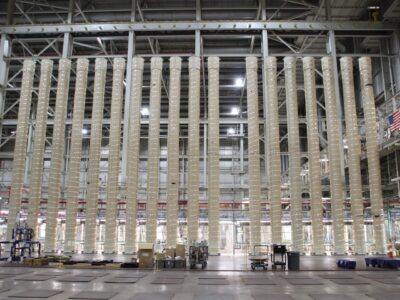Utah Governor Spencer Cox signed House Bill 340, the Solar Power Amendments, which went into effect at the beginning of May. Sponsored by Rep. Raymond Ward (R-UT-19) in the Utah House of Representatives and by Sen. Wayne Harper (R-UT-16) in the Utah Senate, the legislation passed unanimously through both chambers, indicating significant bipartisan support in the state.
The legislation creates a category of “small portable solar generation devices,” which:
- Have a power output of no more than 1,200 watts;
- Connect to a building’s electrical system through a standard 120-volt alternating current (AC) outlet;
- Have a principal purpose of offsetting a portion of the residence’s electricity consumption;
- Meet National Electrical Code standards; and
- Are certified by a nationally recognized testing laboratory, such as Underwriters Laboratories (UL)
These devices must also include a “device or feature that prevents the system from energizing the building’s electrical system during a power outage.” Equivalent to anti-islanding protection in traditional solar inverters, the feature automatically shuts down the residential solar system along with the grid. Without such a feature, the solar panels would continue to send excess generated power beyond what is needed for the residence back into a disconnected grid section, thereby endangering utility personnel and potentially leading to equipment damage.
If the solar device meets these requirements, the legislation will exempt residents from being required to enter into an interconnection agreement with an electric corporation before connecting their system and from additional interconnection mandates that apply to larger solar installations. Those who want such systems do not need to get approval from the electric company before installing or using them, do not have to pay any fees related to these systems, and do not have to install any controls or equipment beyond what the system already entails. These benefits can collectively halve the costs of adopting solar. However, the electric companies are shielded from liability for any damage or injury caused by these systems, and the systems cannot participate in the state’s net metering program.
Overall, the legislation makes it easy for homeowners to install portable plug-in solar arrays and benefit from their clean energy sources without going through longer permitting and financial processes. While it is the first state to eliminate barriers to so-called ‘balcony solar,’ and devices meeting all requirements are not yet available, companies like Gismo Power are responding to the challenge. Even though the company’s product is a solar carport that avoids the challenges associated with plugging into a residence, it is also working on developing a compatible UL standard.
The possibilities are evident in Germany, where residents installed more than 220,000 new balcony solar systems in the first half of last year alone, with more than half a million of them now in the country. German citizen Matthias Weyland told Grist that his 600-watt system saves him about $100 annually, enabling him to recoup his initial $530 investment in five years.

Photo Courtesy Anker
If demand takes off, it could create a new market for the solar industry, creating local jobs while helping Utahns become energy independent. The impact will increase with each additional person who installs such a solar system. Weyland said, “So many people talk to me in our neighborhood and ask about the system when they see it. It’s kind of like a snowball that gets bigger and bigger.”





